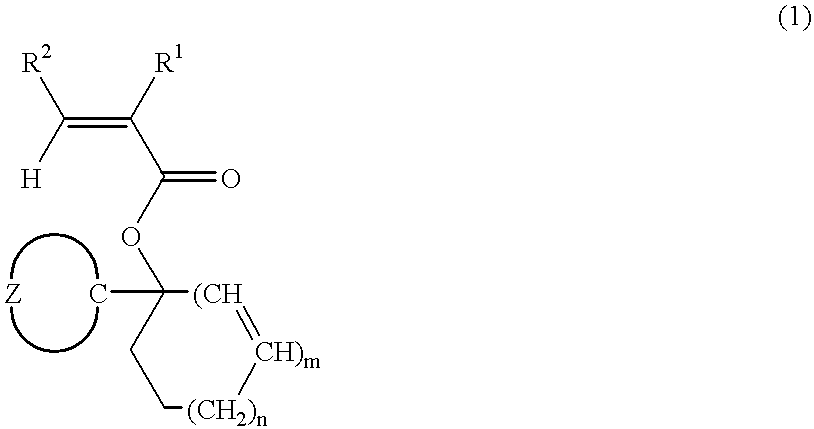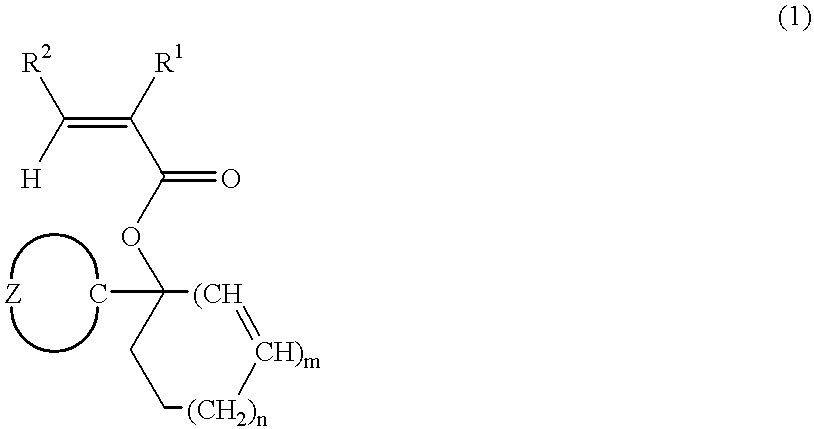Novel ester compounds, polymers, resist compositions and patterning process
a technology of resist composition and ester compound, which is applied in the direction of photosensitive material processing, basic electric elements, electric apparatus, etc., can solve the problems of high rate of dissolution in unexposed areas, and poor acidolysis performance of acid eliminatable protective groups. , to achieve the effect of high degree of acidolysis, low reactivity and rapid progress
- Summary
- Abstract
- Description
- Claims
- Application Information
AI Technical Summary
Benefits of technology
Problems solved by technology
Method used
Image
Examples
synthesis examples
[0161] Ester compounds and polymers containing the same were synthesized according to the following formulation.
synthesis example 1-1
[0162] Synthesis of Monomer 1
[0163] In 500 ml of diethyl ether was dissolved 168.0 g of chlorocyclohexane. Below 60.degree. C., this reaction mixture was added dropwise to 26.4 g of metallic magnesium over one hour. After agitation was continued for 2 hours at room temperature, 84.0 g of cyclopentanone was added dropwise over 45 minutes to the reaction mixture which was kept below 65.degree. C. After agitation was continued for one hour at room temperature, the reaction solution was worked up in a conventional manner. The resulting oily substance was distilled in vacuum, collecting 97.3 g of 1-cyclohexylcyclopentanol. The yield was 57.9%.
[0164] In 1 liter of methylene chloride was dissolved 92.4 g of 1-cyclohexylcyclopentanol. To the solution below -20.degree. C., 74.3 g of acrylic chloride was added dropwise over 10 minutes. To the reaction mixture, 1.0 g of 4-(N,N-dimethylamino)pyridine was added and then, 125.0 g of triethylamine was added dropwise over one hour and below -20.deg...
synthesis examples 1-2 to 1-8
[0166] Synthesis of Monomers 2 to 8
[0167] Monomers 2 to 8 were synthesized by the same procedure as above or a well-known procedure. 31
PUM
| Property | Measurement | Unit |
|---|---|---|
| size | aaaaa | aaaaa |
| temperature | aaaaa | aaaaa |
| transparency | aaaaa | aaaaa |
Abstract
Description
Claims
Application Information
 Login to View More
Login to View More - R&D
- Intellectual Property
- Life Sciences
- Materials
- Tech Scout
- Unparalleled Data Quality
- Higher Quality Content
- 60% Fewer Hallucinations
Browse by: Latest US Patents, China's latest patents, Technical Efficacy Thesaurus, Application Domain, Technology Topic, Popular Technical Reports.
© 2025 PatSnap. All rights reserved.Legal|Privacy policy|Modern Slavery Act Transparency Statement|Sitemap|About US| Contact US: help@patsnap.com



